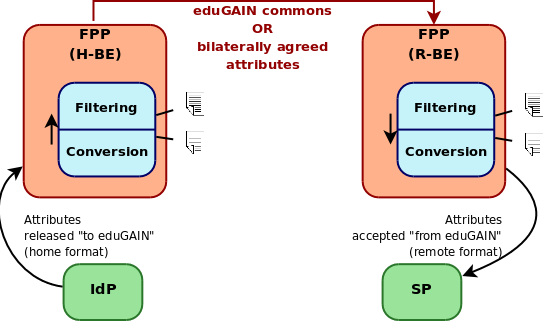Attribute Conversion for eduGAIN
JRA5 Attribute Conversion allows a Bridging Element administrator to define rules to transform attributes being released or received. The same logic can work in both Home and Remote Bridging Elements.
Tartalomjegyzék
Introduction
Attributes are travelling on the wire in eduGAIN-defined format, ie. SAML. Naming attributes and defining their contents might be a standardization task of eduGAIN operators; however it should be possible for federations to agree on custom set of attributes beyond "eduGAIN commons".
Attribute Conversion only adds attributes (or values) to the attribute set; use Attribute Filtering for filtering out unnecessary attributes. It also means that if no rules match an attribute, then it will go to the filter unmodified - so conversion works with a default by-pass policy.
Attribute conversion rule concepts
Most of the rules are based on standard regular expressions and Unified Expression Language.
Each rule works on the actual attribute set which is not necessarily the initial set, as each rule can alter the set (ie. by changing values or names, adding new attributes to the set). This means that the order of the rules is important.
Every rule consists of two parts: condition and action. The condition element is used to determine whether this particular rule is to be processed or not. Thus, the rule action is only processed when all the conditions are met (a rule without any conditions is processed by default).
The condition engine now only supports regular expression -based matching rules. There is two type of matching rules
- remote peer's name (RemoteProviderMatch)
- attribute values (AttributeMatch)
The rule's action is to create new attributes (or to modify existing ones). Please refer to the detailed BasicRule, MergeRule, SplitRule documentation below.
Rule context
When the conversion rules are processed one after another, each rule has its own rule context bound to it. This context holds references to all the matched attributes too. The rule context is also responsible for supporting the rule's action.

